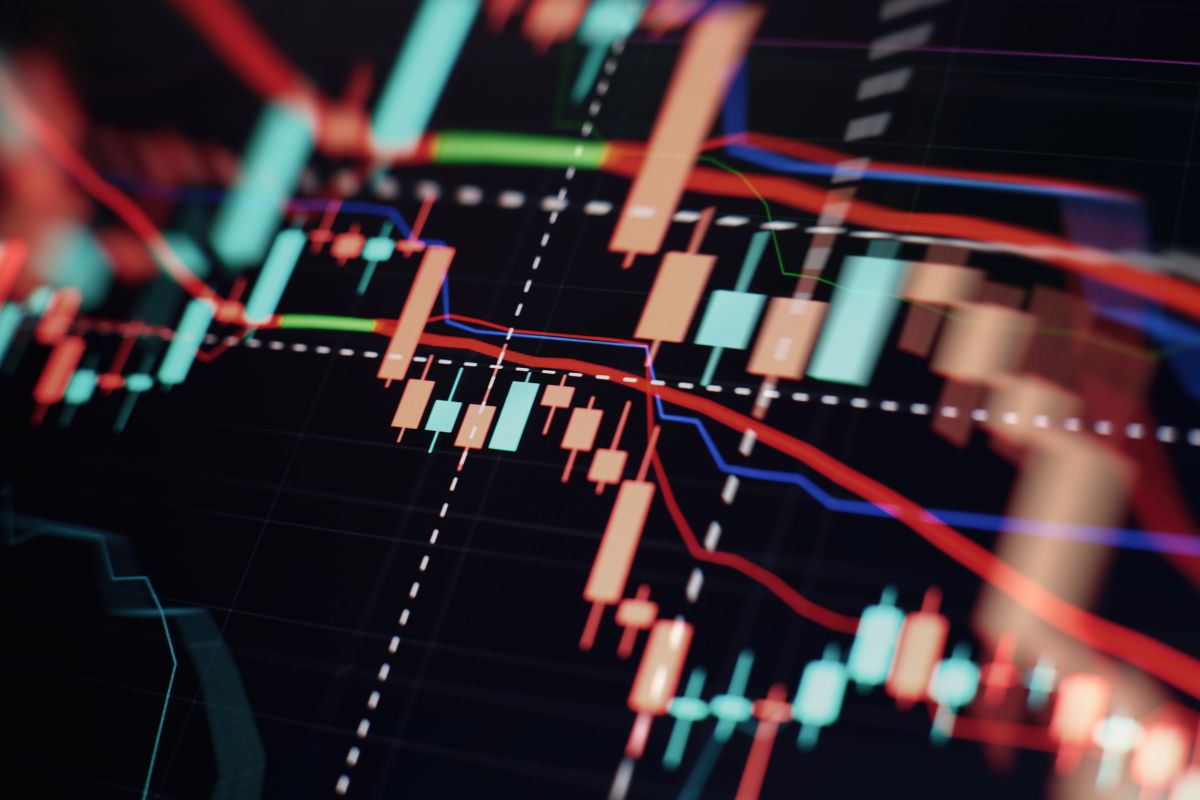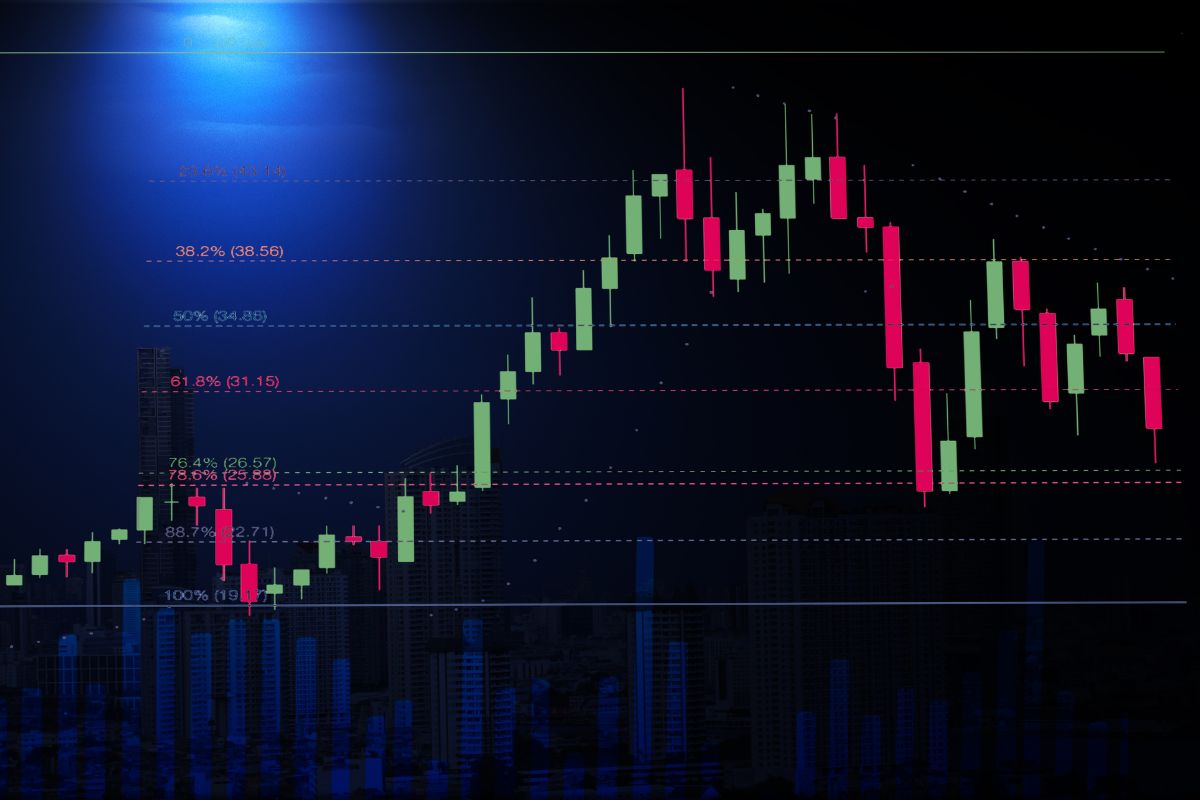Stock volume is calculated as the total number of shares that are bought and sold during a specific period of time, usually during the trading day.
This volume is a totalled measure of the overall turnover of shares. Every ticket is representative of a trade and is counted towards the overall trading volume.

While shares can be traded back and forth a number of times, the overall volume is counted by considering each transaction.
Thus, if 500 shares have been bought and sold, then bought and sold again, the volume would amount to 2000 shares, despite the fact that it is the same shares that have been traded numerous times.
Where To Find Stock Volume On A Chart?
All platforms are able to visually display stock volume throughout the trading day, and this is usually located at the bottom of the chart.
This volume is normally shown as a vertical bar that showcases the total volume for that specific incremental time period.
For instance, a 10-minute price chart will have volume bars that represent that total stock volume for each 10 minute interval. These volume bars are normally colored in red or green.
The green is representative of the net buying volume while red showcases the selling volume.
Many traders will measure the stock volume by using a moving average in order to spot when volume is either heavy or has thinned out.
Dollar Volume Versus Trading Volume
Trading volume is a measure of the overall shares that have been exchanged over a specified period of time.
To contrast, the dollar volume amounts to the total value of the shares that have been traded. The dollar volume can be calculated by multiplying the trading volume by the price.
For instance, if a stock has a total trading volume of 100,000 shares at $10, then the dollar volume will be $1,000,000.
Many people will use dollar volume metrics in order to ascertain whether a stock is able to support its position in a stable manner.
Calculating the dollar volume is also able to be utilized in order to obtain a good idea of cash flow when assessing stocks that are either breaking out or falling.
It can also be used to ascertain which stocks are generating the highest dollar volume during any specific day.
Why Does Stock Volume Matter?
Volume forms the core of any stock. This is because the volume is representative of the interest in the trading activity of the shares.
If there is heavier stock volume, this indicates that there is heavy interest in the shares, and if the stock volume is light, then the opposite applies.

An increase in stock volume also has a tendency to cause significant price movements in most cases, however, this is not definitive.
In spite of conventional thought, breakouts do not require heavy volume. Numerous traders have bankrupted themselves by shorting ‘light’ volume breakouts and continue to rise in spite of the lack of heavy volume.
What Is Relative Volume And Why Is It Important?
The relative volume assesses and compares the current volume to the normal volume and then shows this as a multiple.
The normal volume is classified as the average volume for that specific time period, usually over a number of days.
Whenever the relative volume is 2.5, this indicates that shares are being traded at 2.5 times the normal volume.
This showcases an increase in the traded shares that could lead to price moves. The relative volume can be viewed via the majority of trading platforms.
Any surges in volume can be indicative of money being flown into or out of a specific sock, which indicates that price moves are likely.
What Is Liquidity?
Liquidity represents how much the market is able to absorb through either selling or buying without having an impact on the market itself.
This refers to the amount of shares that you will be able to buy or sell without the price of the stock moving. Liquidity will always override the price, this is true for larger stock traders and hedge fund managers also.
Programs that specialize in high frequency trading and smart algorithms will be able to detect large orders and can also potentially front run orders, meaning that traders can chase entires and exits more easily.
For instance, if you are in possession of 100,000 shares in stock that is being traded at $8 with a daily volume of 1 million shares, you can cause the stock price to fall to $7 if you decide to sell your shares in one session.
Conclusion
To conclude, the volume of stock is calculated as the total number of shares that are bought and sold during a specific period of time, usually during the trading day.
This volume is a totalled measure of the overall turnover of shares. Every ticket is representative of a trade and is counted towards the overall trading volume.
As always, you should avoid investing in stock that has a lower volume as this may be indicative that there is little interest in the stock and thus, it may not have much liquidity.
When you are considering investing in stock, you should contact an experienced trader in order to ascertain the best course of action for your investments.
It is crucial to understand the processes involved in the trading process, as there is far more to buying and selling stock (see also our guide to buying stocks from a company) than the simple act of trading shares.
Thus, you should ensure that you are always engaging in extensive and thorough research prior to engaging in the trading process, and do not invest anything that you cannot afford to lose.
Understanding stock volume is essential, and once you can accurately assess stock volume over specified periods of time, you will easily be able to make relevant entries and exits to enhance your financial portfolio.
- Dividend Growth Investing for Millennials - February 27, 2025
- The Ultimate Guide to Investing in Precious Metals Today - December 6, 2024
- Essential Cryptocurrency Trends: What You Need to Know - December 6, 2024

